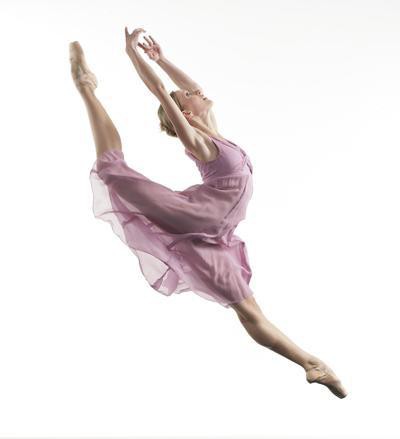Ballet is a very special kind of art. Dancers in the language of gestures tell the audience various stories. Drama and comedy are embodied in choreographic images, one of the most difficult elements of which is a jump in ballet.
Terminology
The history of ballet goes back to 18th century France. Therefore, in ballet, the traditional use of names of figures of dance in French. Only a few terms - cabriole, pirouette and revoltad - are Italian.
Jumping in ballet: name and short description

- Antrash - dancer in a jump crosses his legs in the air in 5th position. There are even and odd.
- Ballonne - a jump on one leg or an jump on the tips of the fingers with advancement behind the extension leg, which at the time of half-sitting on the supporting leg assumes the position of sur le coude-pied.
- Ballotte - the dancer gracefully bounces, moving the body in the right direction. The extended legs freeze for a moment in the 5th position, after which one leg in the extension is stretched toward the side of advancement with the simultaneous deviation of the body, the other descends onto the stage.
- Batri - jumping movement is complicated by one or more kicks.
- Breeze - a short jump with advancement and kick of a foot on a foot. Starts and ends in 5th position.
- Glide path - jump-glide with movement behind the open leg. At the same time, socks do not come off the stage.
- Jeté - a jump in classical ballet, in which the body of the dancer moves from foot to foot. It can be moving in any direction.

- Cabriole is a complex virtuoso figure. The performer holds one raised leg at a certain height, knocking it one or more times with the other leg.
- Pa de Poisson is a big difficult jump in ballet from a supporting leg to another. At the same time, throw back each leg in turn. The ballerina in flight bends back and becomes like a fish jumping out of the water.
- Pas de bac - the dancer jumps from foot to foot with a sliding forward and backward movement in the 5th position.
- Pas de sizo - a jump from a supporting leg to another, in which the elongated legs in turn are powerfully thrown high forward, briefly connected in flight, in conclusion, one of the legs through the 1st position abruptly moves to arabesque.
- Pa de sha - in a jump, the legs are bent and, one after another, are thrown forward or backward at an angle greater than the straight line. Hands are easily and gracefully retracted from the 3rd position, and the body flexes plastic backward.
- Pa Subreso - a brisk leap with the body bending from two legs to two from the 5th position to the 5th.
A few more types of jumps

- Revoltad - performed primarily by a male artist. A complex figure with 1-2 flips in the air.
- So de basque is a figure of classical ballet. Along with the jump from foot to foot, a sideward movement and a coup in the air are performed.
- Sote - the performer jumps from two legs again to two, all the while maintaining the same position.
- Tan leve - single or multiple vertical bouncing.
- Tour anler - jump in place with a single or double rotation of the body.
- Faye - the dancer jumps from two legs to one with a quick turn of the body in flight. Requires a clear coordination of movements.
- Shazhman de pied - a jump in the ballet, in which the ballerina flies from 5th position to the same, changing her legs in flight. It can be supplemented by a coup in the air.
- Chasse - in a jump with advancement, one leg catches up with the other. At the peak point they are connected to the 5th position.
- Eshape - a figure of a classical dance of two jumps with the transfer of legs from a closed to an open position and back.
Virtuosity
To make the jump in ballet easy, airy, create a feeling of weightlessness and flight, students must work long and hard for years. Of crucial importance is muscle strength, coordination of movements, good stretching, flexibility and joint mobility.
Compared to the soft legs of ordinary people, the calf muscles of the ballerina have steel hardness.
When the dancer runs up before the jump, he develops a high horizontal speed - 8 m / s, and vertical - 4.6 m / s. If you think in scientific terms, the artists' acceleration when jumping in ballet is 2g, which is comparable to the take-off of the aircraft.